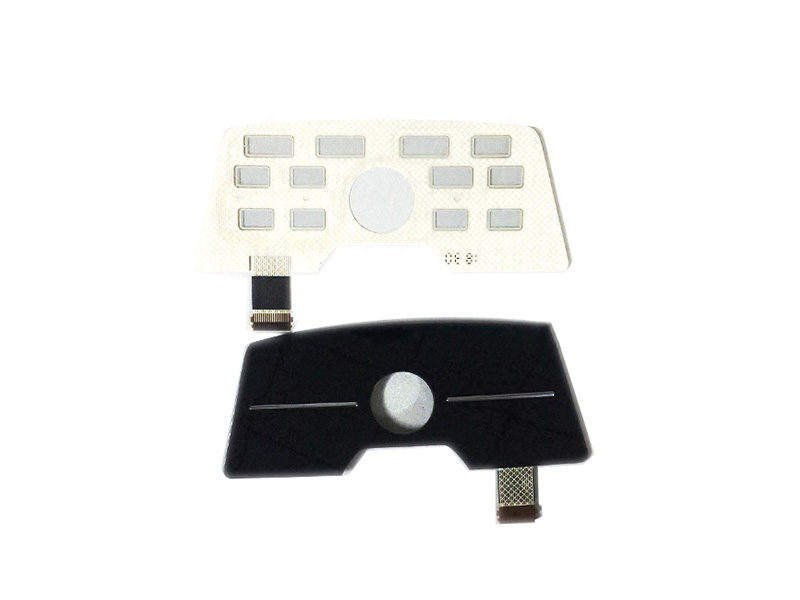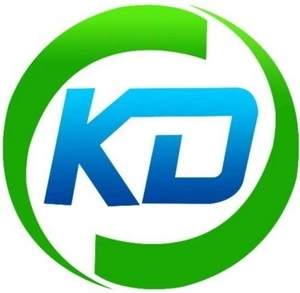

In the whole Screen-printing process, the selection of screen parameters, the selection of ink characteristics, the hardness of the squeegee, the control of the squeegee Angle, the setting of the squeegee speed and other five screen printing variables must be properly adjusted and matched, must be excellent. Membrane Switch products. We are a film Switch manufacturer, engaged in graphics overlay, film panel, soft circuit, Silicone Rubber Keyboard, LED, LGF silicone rubber keyboard. Welcome all kinds of customers to come to consult.
First, the origin and classification of membrane switch:
1. From:
1) The pattern is generated on the membrane substrate, and the whole element is a switching function, which is called membrane switch, English name Membrane Switches.
2), by several layers of different materials, film bonded into the finished product, the thickness is about 1,2 ~ 2,5 MM, the appearance is like a board, both the dual role of panel and switch, so it is also called panel SWITCHES, English name Panel switches, or sheet switch.
3) Because this switch action travel is short, only about 0.25~ 0.5mm, the switch press pressure is 0.5~1N, more sensitive, with the touch of the hand to complete the switch action, so it is also called touch switch, or touch keyboard.
2. classification:
1), divided into flexible board and rigid board according to circuit substrate
2), according to the panel shape is divided into flat or stereo
3) According to operating experience, it is divided into non-inductive and inductive
4), divided into transparent and finger touch screen type according to special purpose
5), according to the combination of panels and discrete parts and keycaps and keyboards
6) Here, we only discuss the use of flexible sheet membrane switch (R) sheets and printed materials.
Second, the membrane switch structure and the current R structure
1. Structure: Flexible board (R) and rigid board (Y)
1), R structure: membrane switch panel layer, isolation layer, circuit layer all from a variety of different properties of the soft film such as: PET, PC, PVC composition.
2) Y-structure: The pattern and circuit of the switch are made on both sides of the double-sided copper foil on the common double-sided printed circuit board. Through the metallized hole, the two sides are communicated with each other, and the components are welded on the back side, and the metal guide is used as a conductive labyrinth. The contacts of the disk, the wipes are wound with flat cable leads.
3. Membrane switch used in the membrane sheet
Panel materials: AUTO TEX products from Coulter and International in the United Kingdom have different thicknesses and (thickness 0.12 to 0.25 um) panel materials.
Sand surface PET includes F series (fine sand surface), V series (grit surface). It has good polar sheet material that can be made convex and has undergone special chemical treatment on both sides. Sand surface can be printed with transparent window liquid. Glossy surface can be printed with PVC or PC ink.
Hardcoat chemically treated PET: EBG (glossy) series EBA (matt) series
Hard-coated PC sheets come in different sizes: AUTOFLEXPC G (glossy) AUTOFLEXPC A (matt)
Circuit layer sheet: Yes: AUTOTEX products special PET.
The heat-stable and anti-shrinkage treatment and adhesion treatment of smooth PET sheet, AUTOSTAT CT3, CT4, CT5, CT7, thickness was 25,100,125 UM.
The heat-stabilized and anti-shrinkage treatment and adhesion treatment of the misted PET sheet is HT5 with a thickness of 125 um.
An opaque white satin-like PET sheet heat-stable and anti-shrinkage and blocking treatment, WT5, thickness 125UM.
The isolation layer is usually 0.05~0.2mm thick PET, PVC, the thickness of which depends on the key position and the size and form of the isolation window. The isolation window is made by stamping.
4. Printing materials and printing
Window Fluid: UV-curable. There is WINDOTEX GLOSS (glossy transparent), WINDOTEX ANTIGIARE (matt) is matte, FOTOTEX UV MATT (sand surface). Glossy transparent window liquid and matte window liquid can be mixed to achieve the desired effect. Stir thoroughly before printing, 100T screen, 25#~35# capillary film making screen, avoiding sunlight printing, the printing sequence is placed in the first or second process of surface printing. The window fluid can make the window of the hair surface layout transparent, and also make the transparent window an opaque matt surface. The glue is suitable for -40~180°C. The material is PET, PC, PS, PP, PMMA, metal and glass.

Panel layer decorative ink
A. The ink for the panel is a solvent-evaporable ink. There are many kinds of ink in this area. However, considering the fineness of the ink, pure hue, strong hiding power, and strong bonding with the PET substrate, it is recommended to use the German Biolung TJ series., Japan Seiko GAP series, Li Seda GV series.
B. The panel printing is reversed, and the anti-pattern is printed on the smooth surface of PET (if PET does not use AUTOTDEX, it should be polarized).
C, according to the requirements of solvent volatile ink (such as ink before printing must be fully stirred).
D, the color printing should comply with the first dark color after the light, for the color printing as much as possible to print two times, to ensure its coverage, so that the ink saturation increased, to avoid color overprint ghost.
E. Note that when dark color is overprinted, pale colors are changed, and light color inks should be printed in the form of Yinwen blank printing to reduce the influence of dark ink on the light ink phase. If it is impossible to use the blank printing method, Yang Wen The ink stamp is thicker, but it must be dry enough to make the ink cover stronger.
F. Pay attention to the requirement of back and front printing. Normally printed white and silver, its role is to prevent the circuit pattern behind the board from being exposed. At the same time, the hue of the ink is not changed, and the ink printed on the panel can be set off more vividly. Therefore, the back printing ink requires strong hiding power, poor selection, insufficient printing once, and printing twice to achieve the desired effect.
The back of the panel is printed on the back of the screen: In order to prevent the wear of the panel ink layer, to protect the graphic color.
A. Clean the ink on the back of the panel to improve the hiding power and prevent the circuit behind the panel from being exposed.
B. The upper back of the panel must be silk-screened with back cover. The back cover ink is available in Biolung TJ-944 (white), preferably silk-silvered ink, in addition to achieving the obstruction of ink, and at the same time rendering the ink color more vivid.
The transparent window part of the panel is decorated:
A. Printable Ketti Window Fluid
B. A special color transparent ink can be printed, and the color of the color transparent ink should be consistent with the color and wavelength of the light emitting device light emitting element, so that the emitted light is brighter.
C. How to select and use three primary colors with good transparency so that the transparent ink exhibits high color transparency in the transparent window portion. In practical applications, it is found that transparency is not very good. Another kind of good transparency and wrinkles on the surface of the ink layer, for the convenience of transparency is very convenient, you should re-select the excellent ink, such as the selection of Germany Biolung, Japan Seiko, and Lisa GV series, etc., for the appearance of orange Skin wrinkles should be considered from the prepress treatment of the ink. Wipe out slight wrinkles on the ink surface.
Conductive layer is printed on the conductive printing material. Generally, silver ink and carbon ink are screen printed on the surface of the film.
The conductive inks commonly used in membrane switches are:
1. Silver ink: The conductive inks ED427SS and ED478SS used for membrane switch are used in American Acheson Ink, their resistance values are less than 0.1Ω/□ and 0.025Ω/□, respectively, to prevent silver discoloration and improve the wear resistance of the printing layer. Therefore, ED427SS can be mixed with ED423SS randomly.
2. Carbon ink: ED4233SS and ED725A are used exclusively for membrane switches. Their square resistance values are <50Ω/□ and <0.017Ω/□.
Conductive ink characteristics:
3. Pre-press and post-printing process operation requirements for screen printing silver and carbon ink:
A silver, carbon ink before printing requires the jar cover to be fully stirred, and to stir up or down, otherwise it will appear in the same can of silver ink in different silk screen stages, the resistance of the imprinting and its conductive properties are different, and sometimes can also affect Adhesion with film.
B. After the correct screen-printing operation, the silver carbon ink must stop on the film for a while, so that the solvent moistens the sheet and puts it into the oven, drying as required to ensure adhesion with the film.
C. In order to accurately achieve the conductivity of the screen-printing silver ink, printing is generally divided into three levels of drying, ie, low temperature, medium temperature, and specified temperature, and should be dried. If the resistance deviates from the requirement, it must be dried until the square resistance reaches silver. Ink design requirements so far.
D. The resistance value should be measured in terms of square resistance Ω, because the line resistance does not take into account the width and thickness of the printed line, so the line resistance is not the standard resistance of the silver and carbon ink.
E. Silver ink on the silver screen is not printed. The silver ink cannot be returned to the original can and should be poured into a clean can. The next time it is used, the silver ink in the original can is guaranteed for its service life.
F, screen printing silver, carbon ink, due to the relationship between its characteristics, screen printing should choose a softer squeegee, thick film layer selected, thick screen, large openings, light edges. The principle of printing is light, and the printing principle of compound ink is important.
4. the choice of insulating ink and the main technical indicators: As a thin film switch for the protection of insulating inks, should be selected with the conductive ink and film sheets matching the insulating ink, which on their adhesion is very helpful in the membrane switch, often choose Edson's ED-452SS UV light-curable ink, the color is transparent blue or colorless, its insulation is 2400VAC/MIL.
The technical parameters of the insulating ink are:
A, should be fully stirred before use
B. According to the required insulation properties, the mesh size is 160-300 mesh.
C, light curing energy control in 300-600MI/CM2
D, screen printing ED452SS need 3-5 minutes after UV curing, is conducive to achieve better quality results.
The above is just a description of the main aspects of the membrane switch manufacturing process, screen printing technology, and other major aspects, in fact, in the production of membrane switches will also encounter, for example, static elimination of the problem on the sheet, decorative ink color change problem as well as screen printing sites and screen-printing environments, purification issues will affect screen printing quality.
Tel: 86-0769-83939816
Mobile Phone: +8618929158127
Address: Keda Film Technology Company, Dongguan, Guangdong
Website: https://www.kedamembrane.com/
Mail: zhangjianfei@dgkdmembrane.com

